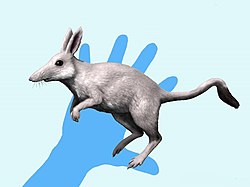| Arminiheringia Temporal range: Late Eocene | |
|---|---|
| Scientific classification | |
| Domain: | Eukaryota |
| Kingdom: | Animalia |
| Phylum: | Chordata |
| Class: | Mammalia |
| Order: | † Sparassodonta |
| Family: | † Proborhyaenidae |
| Genus: | † Arminiheringia Ameghino, 1902 |
| Species: | †A. auceta |
| Binomial name | |
| †Arminiheringia auceta Ameghino, 1902 | |
| Synonyms | |
| |
Arminiheringia is an extinct genus of sparassodont. It lived during the Early Eocene in South America.




